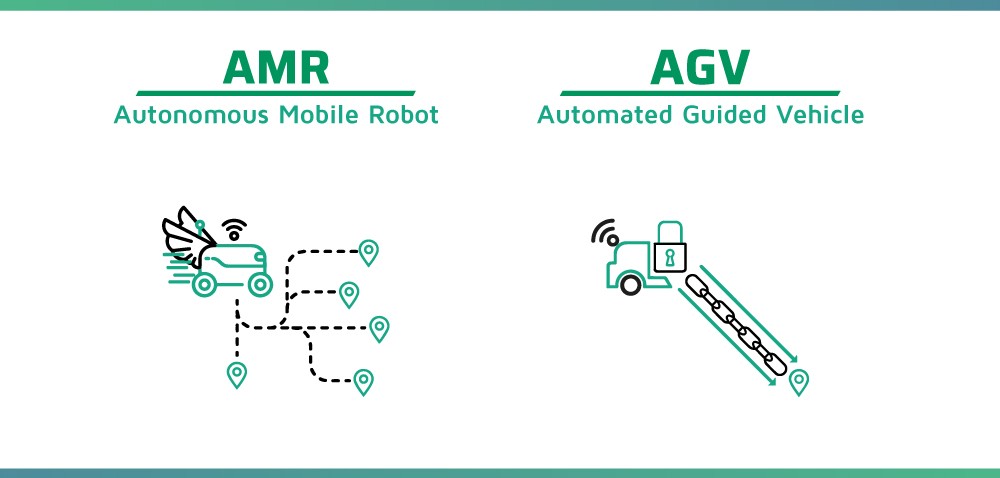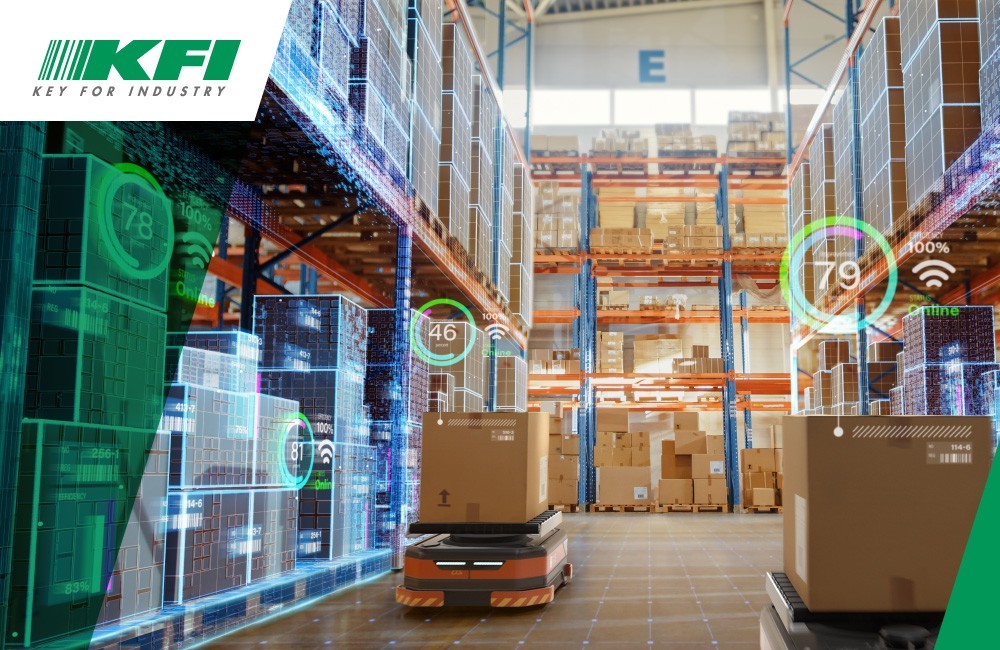AGV e AMR: robotics that is changing Logistics
If, in a coulple of years, when entering a warehouse we notice an new and innovative management of activities, we will owe it mainly to technology, robotics in particular.
The development of increasingly smart and more sophisticated solutions, has profoundly changed the way in which logistic flows of goods and materials are managed. The main actors of this season of change include, with no doubt, the Autonomous Collaborative Robots.
Automation solutions include very different categories, and at this stage, it is important to keep in mind some particularities; for example the innovation brought on by the latest generation of robots, compared to previous ones.
These systems differ by two main types: AGV (Automated Guided Vehicle) and AMR (Autonomous Mobile Robots) devices.
AGV AND AMR DEVICES, WHAT ARE THEY?
An AGV is an automated guided vehicle, used primarily in the industrial field, for finished and semifinished product handling within a plant. The system completes a task through preestablished pathways, stopping in the event its security sensors detect an obstacle. Once removed the obstacle, the AGV continues on his assigned task. These systems seem to be particularly useful inside fixed installations, with repetitive and halting types of handling.
AMR, also known as collaborative robots (or co-bots), are devices that move autonomously, planning optimized and efficient routes thanks to its sensors, on-board computer and maps. Thanks to their ability to easily communicate with operation management systems, they are able to integrate themselves in production processes regarding intralogistics and fulfillment, so much that it is estimated that they will be used to an increasingly greater scale in production warehouses, in distribution centers for preparing e-commerce orders, to handle pallets, trolleys, racks and shelving.
Thanks to these devices, it is possible to facilitate item storage, the transportation of items following picking activities, the transfer of bulk products, components and assembled, to serve production lines and deliver lots to the next production phase or transport what was picked up to the next shipment.
WHAT ARE THE DIFFERENCES BETWEEN AGV AND AMR?
Even though apparently not very dissimilar, the differences between AGV and AMR are considerable: both for its components, and for its use for the level of invasiveness in pre-existing environments.
Once in our lives, we’ve all had to take a train or taxi. The first is forced to follow its track and a pre-established course, like an AGV; while the latter is able to move freely between any two points and reprogram its path in case of intense traffic, just like an AMR.
The functioning of these types of robots involves a different mapping work, not only of the warehouse, but also regarding the organization of the work. Usually the installation of an AGV demands a specific investment on the infrastructure, so that it is able to track and delimit a path through a physical support, such as magnetic bars. This results in more complex and costly changes because they entail a change in facilities, as well as operational restrictions on humans.
Instead, an AMR elevates the potential of an AGV to the next level, as it has no need of a physical path to follow and is able to map the environment, understand if the main route is clear, or if necessary travel an alternative path, avoid obstacles or stop to give way to other vehicles.
These new generation robots, capable of receiving real-time data from the system, have the ability to work in a more coordinated and efficient way. In a warehouse can be places different types of AMR that will be able to exchange information in order to avoid impacts and to optimize their work routes, thanks to their fleet management software.

Why choose an AMR
The AMR is a perfect ally for the logistics operators, it is able to support them in their daily activities and to relieve them of a series of repetitive tasks, more related to an automaton. More and more companies expect robotics to bring more value to human work, offering support during repetitive operations and thus generating more satisfaction for one’s work.
As analysed previously, mobile robots can move autonomously, following the best route and do not require the supervision of an operator. They can even work for 12 to 15 hours before needing a battery recharge and they can be intended for strenous activities continously.
We are KFI – Key For Industry
Since 1991, KFI reduces the impact of global changes on the activities of the Suppy Chain, by providing companies new competitive advantages. Our mission is to bring the technologies and solutions of the Industry 4.0 within the reach of any business, whatever size they may be.



